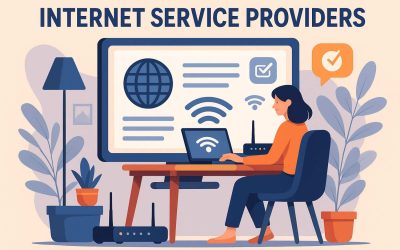Business fraud has long been something most businesses are concerned about. But, still until this today, it stands as one of the most significant challenges most companies face when they have an online business, mainly because online attackers will always find news to breach data.
Nevertheless, fraud teams are dealing with increased pressure on their shoulders to find new ways to prevent these attacks. Simultaneously, there are always new regulations that are rolling out.
6 common challenges you will face when dealing with business frauds
There are many big challenges business owners must face while taking care of their online business – but lets take a look at 6 of the most common challenges.
Handling too many transactions with a small fraud team
- Being able to address emerging fraud trends quickly
- Defending chargebacks
Of course, this can significantly impact fraud rates, and usually, if frauds aren’t addressed quickly enough, they can result in many other issues. Moreover, if your fraud team struggles to address issues, your best bet is to outsource fraud and abuse prevention solutions to a trusted third party.
Fraud prevention in banks
Fraudsters would love to attack users with financial information. Bank fraud prevention is one of the biggest challenges financial organizations have to go through. In this case, every financial institution must fight against complex fraud attacks continuously changing. Nevertheless, here are some of the biggest fraud challenges for banks:
- Customer onboarding: Due to regulations by Anti-money laundering (AML) and Know your customer (KYC), it’s quite a risk for banks to contribute to digital onboarding. They are legal requirements that request you to confirm user identities to ensure they won’t commit financial crimes. One common method employed by banks to comply with AML and KYC regulations is implementing a robust customer screening process, which often involves conducting thorough PEP screenings. These screenings aim to identify individuals with potential political connections or high-risk profiles.
- Credit card fraud: Banks should be well aware of any fraud committed regarding transactions or when the withdrawal occurs. However, spotting patterns have limited exposure only by seeing the amount, currency, and category.
- Account protection: An account takeover might happen when an online fraudster steals sensitive information such as the log-in details of a user. However, one of the most common issues includes that banks will identify and block fraudulent attacks. Still, the bad part is that fraudsters will take advantage and try to find new ways to hack their way into sensitive information. In other words, it’s a continuous fight!
Above all, many fraud scenarios occur, and no matter how well prepared banks can be, there will always be ways in which fraudsters will launch an attack. Here are some more fraud scenarios that occur:
- Account opening fraud: Includes stolen identities for obtaining credit cards or fraudsters opening accounts and acting like real customers.
- Account takeovers: Online attackers who overtake stolen accounts can start to spend the money in the account and even change all the credentials to act like legit users.
- Fraudulent fund transfers: Occurs when online attackers will use an emulator or cloned app to make bank transfers. This is a standard method used for stealing money from accounts.
Identifying warning signs from online attackers
Even though online attackers have used the same methods to commit fraud for several years, it’s vital to be aware of warning signs of online theft and financial fraud to protect your business and avoid letting data fall into the wrong hands.
Whenever online attacks try to hack into your sensitive information, here are some of the most common methods they’ll use to do so:
- Links or ads: You might see spammy links or ads that ask you to click on them so that they can get support, but don’t be fooled by these tricks. You may receive these links by email or by downloading a file you shouldn’t.
- Phone calls: Online attackers might make anonymous calls and lie to you that they are a legit company. They can fool you into offering fake opportunities and gathering your personal information. Your best bet is to tell them you are in a rush or to send any important information to your email so you can further identify what they are trying to do.
- Emails: A standard method online attacks will use for fraud. The most common type of email is sending fake job openings, fake links, or any other attachment containing malware. Gmail and Outlook will usually be smart at identifying these, but I don’t think they can save you every time, so you need to watch out.
- Pop-ups: Random pop-up messages can seem like you made a mistake or might be telling you that you won something; the last thing you want to do is to click on it. It may be a virus in disguise, asking for your sensitive information. A standard pop-up message informs you that you won a prize and will ask for your information to send you the prize, but avoid believing in these pop-up messages.
Not taking advantage of ML and AI
Some fraud teams are taking advantage of making use of machine learning (ML) and Artificial Intelligence (AI). However, simultaneously, many fraud teams aren’t taking advantage of this. Nevertheless, it’s pretty tricky for human beings to do everything on their own, and while AI can work without taking breaks, humans can’t do this, unfortunately.
With the help of ML models, anti-laundering capabilities have increased. Thus, it hasn’t only strengthened the protection we receive against online fraud but is also supporting our anti-fraud strategies. However, according to a recent study, only 13% of organizations worldwide are using AI and ML capabilities to fight fraud!
Internal fraud
The world isn’t perfect, so before you allow anyone in your team to gain access to sensitive information, you must be sure you trust them enough. Sadly, that isn’t always the case, so you must take action to keep an eye out for employee theft and internal fraud! Here are a few steps you can overlook:
- Employees who work too many hours: There’s nothing terrible about working too many hours, but sometimes, some employees might do it to take advantage of you. Internal frauds can happen while no other team member is around, so if you find some of your employees coming in early, working on holidays, or staying late, there’s something to be curious about.
- Employee burnout/high-stress levels: Have you realized one of your employees is stressed out? You never know what the reason may be. It might be due to your employees having something to hide! It’s always important to investigate further.
- Living beyond their standards: This can’t always account for internal fraud but does take part in it. For example, identify any employees coming the next day with an expensive car, or clothing, or telling you about a costly vacation they are going to. It may be something to investigate about. Impulsive purchases can always be fraudulent, so it’s best to watch before something even bigger happens!
Unprepared employees
When fraud occurs, nobody will inform you of an attack before it happens. Thus, the biggest issue amongst organizations is how unprepared they are when an attack does happen. In fact, according to a study, more than 70% of organizations claimed to be unprepared for an online attack.
Above all, it’s more important than ever to teach your employees how to prevent fraud and immediately report suspicious behaviors. Your employees should be your first line of defense against fraud, which is excellent for real-time fraud identification. Try to hold regular meetings on how you can incorporate new ways of fighting fraud. Even if there are new hirings, ensure that you teach them how to be well aware of fraudulent activities.
Alternatively, you can consider using a dark web scanner to identify if any site on the web is using your information for marketing purposes. Employees can learn how to use this and continuously monitor if this occurs or not.
Conclusion
These are six big challenges that organizations face when it comes to business fraud. Fraud is something we can’t ever stop, and the worst part is that it may come unexpectedly. You never know when it can happen and why it happens.
Moreover, there are too many challenges organizations face and as statistics showed, the majority of organizations aren’t prepared at any level to face fraud. The worst part is that when fraud hits your organization, it can damage your reputation and cause too many issues that will never allow your organization to be the same. Therefore, it’s best to prepare for it before it hits you.
More must-read stories from Enterprise League:
- Are you being professionally ghosted? Learn how to handle it the right way.
- The relevance of print marketing and how to make it work for your business.
- 17 warning signs of a terrible boss that everyone should be aware of.
- 11 ways to get customers in the door and improve sales in retail stores.
- Proven and tested psychological tactics for successful marketing.
Related Articles
Internet Service Providers: What You Need to Know
You need a fast connection for streaming shows, working from home and playing video games, so finding the right internet company is essential. The crowded market of providers includes promises of good deals and unrestricted connections. What are the top...
What Are My Options for 24-Hour Fire Watch Services Near Me?
The fire risks associated with running a business change depending on each company's operations. Whether your employees work on construction sites, manage residential units or clock in at a traditional office, fire watch experts can help. Explore your options...
Remote Support for Cross-Platform Teams: How HelpWire Optimizes IT for Windows, macOS, and Linux
In the current business environment, IT teams are tasked with supporting increasingly complex and diverse workforces. With many companies transitioning to remote and hybrid work models, the need for reliable, cross-platform support has never been more apparent....
Internet Service Providers: What You Need to Know
You need a fast connection for streaming shows, working from home and playing video games, so finding the right internet company is essential. The crowded market of providers includes promises of good deals and unrestricted connections. What are the top...
What Are My Options for 24-Hour Fire Watch Services Near Me?
The fire risks associated with running a business change depending on each company's operations. Whether your employees work on construction sites, manage residential units or clock in at a traditional office, fire watch experts can help. Explore your options...






